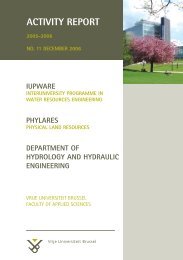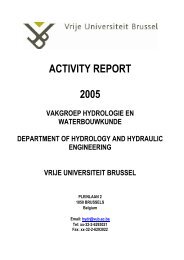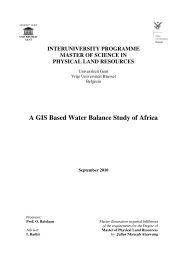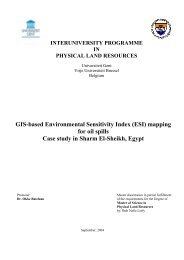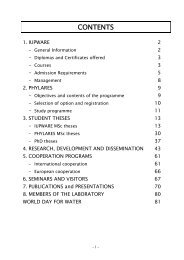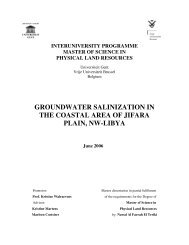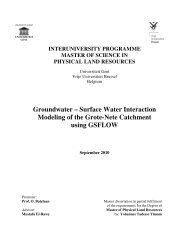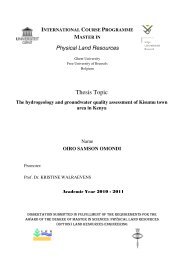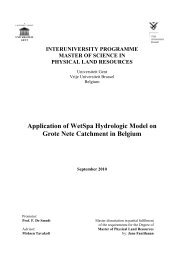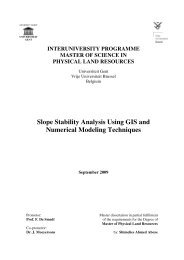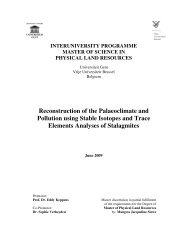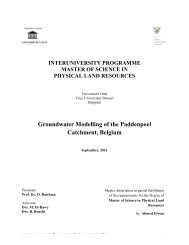Surface Water Interaction Modelling Using Visual MODFLOW and GIS
Surface Water Interaction Modelling Using Visual MODFLOW and GIS
Surface Water Interaction Modelling Using Visual MODFLOW and GIS
- No tags were found...
Create successful ePaper yourself
Turn your PDF publications into a flip-book with our unique Google optimized e-Paper software.
PHYLARESModel setup / ch.6__________________________________________________________________________________________31Chapter 6Model Setup6.1 Description of the Groundwater Flow ModelThe steps of model construction can be summarized as follows (Pinder, 2002):1. Establish the minimum area to be represented by the model.2. Determine the hydrological features that can serve as boundaries to the model.3. Compile the geological information.4. Compile the hydrological information.5. Determine the number of physical dimension needed for the model.6. Define the size of the model.7. Define the model descritization.8. Input the model boundary conditions.9. Input the model parameters.10. Input the model stresses.11. Run the model.12. Output the calculated hydraulic heads.13. Calibrate the model.14. Make the production runs.The groundwater model boundary areal extent must be such as to incorporate all locations wheremodel heads are expected to change in response to stresses imposed on the model, incorporatethe area of interest to the client <strong>and</strong> to the extent possible coincide with an area defined bydistinct <strong>and</strong> easily evaluated hydrological boundary conditions.______________________________________________________________________________________Groundwater – <strong>Surface</strong> water interaction modeling using visual <strong>MODFLOW</strong> <strong>and</strong> <strong>GIS</strong>




